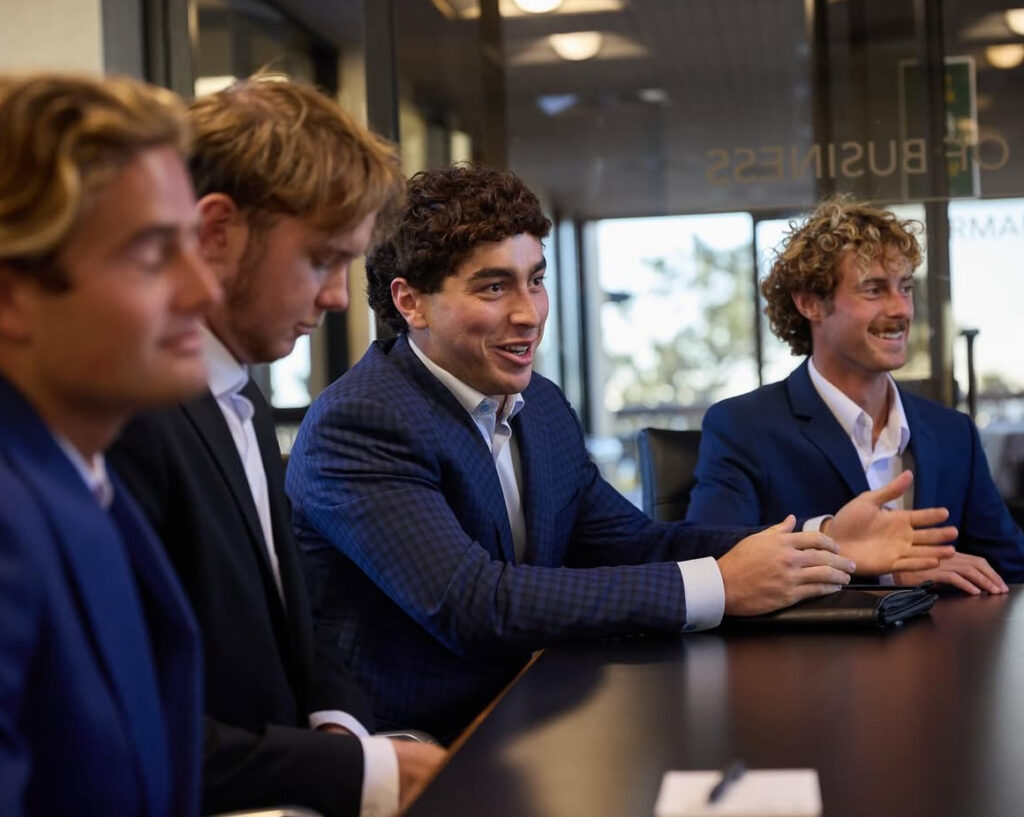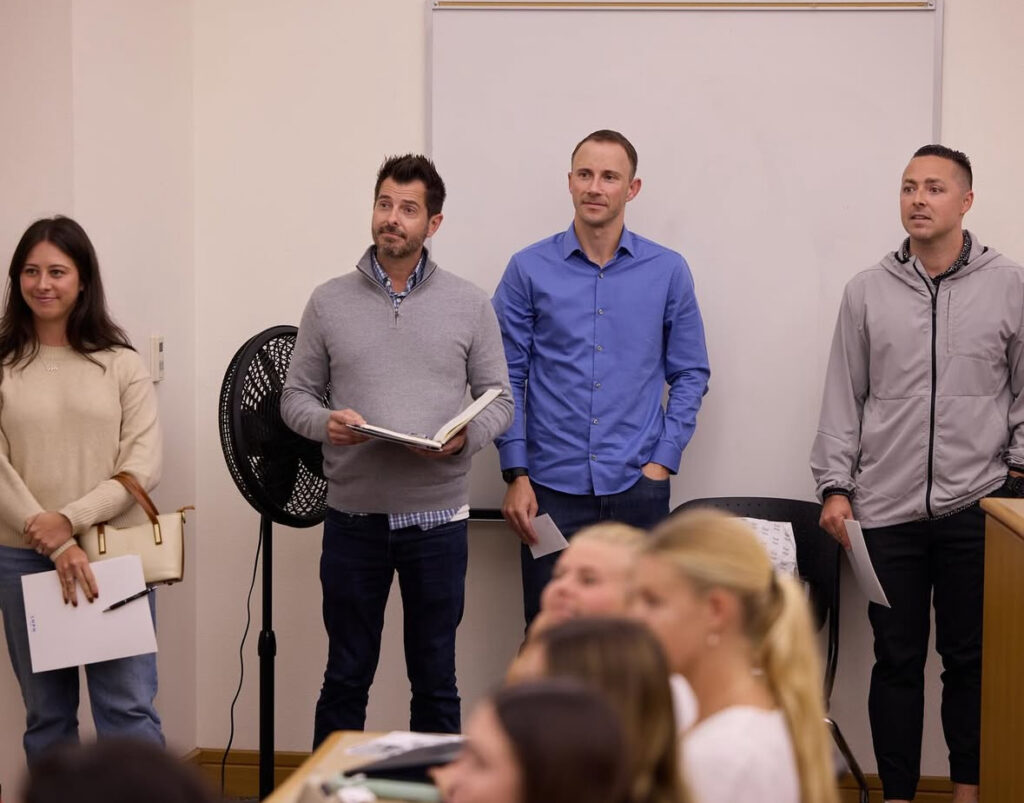In straightened blazers and slacks, around 60 students prepared to walk into a conference room to deliver a pitch that could impact far more than their gradebook.
On Oct. 15, students from Point Loma Nazarene University’s MKT 3033: Consumer and Organizational Buying Behavior class pitched nonprofit organizations they felt aligned with LHPH Capital, a local company that partnered with the class.

After watching 14 presentations, representatives from LHPH came to a difficult decision, selecting four nonprofits to each receive a $1,000 donation.
A check ceremony will be held on Nov. 12, where the following nonprofits will be invited to receive their donation: Autism Tree Project, Operation Hope, Miracle Babies and Casa de Amparo.
The project was introduced to the Fermanian School of Business (FSB) this year by Vassilis Dalakas, associate dean of graduate and professional studies and professor of marketing, after leading a variation of it 20 years ago at Northern Kentucky University.
He said the results exceeded his expectations.
“Typically, there is a little bit more variance,” Dalakas said. “You have the groups that shine, the students who are all in. You have some groups that, you know, are pretty good. But, there’s always at least a group or two that you’re like, ‘What happened there?’ And one thing that truly impressed me and gave me a great sense of pride was how it was great across the board.”
Tim Lawrence, CEO of LHPH, had low expectations going into the presentations, but was hopeful that he would be impressed.
“I noticed that nearly every student was very well prepared and had practiced, which allowed them to be more present and comfortable,” Lawrence said in an email interview. “All of the pitches and charities were great, and it was agonizing to have to narrow it down to just four winners of the 14 pitches.”
Kevin Londerholm, associate vice president of operations and technology at LHPH, observed another round of presentations and said he faced a similar challenge when selecting the winners.
“Within seconds of entering the conference room on campus and meeting the first group, it was clear to us that these PLNU students came prepared,” Londerholm said in an email interview. “As the presentations went on, Eyo [business development and marketing associate for LHPH] and I found ourselves in a predicament — we had graded each nonprofit pitch with either a score of 29 or 30 out of a total of 30 points.”
For Grace Nash, a fourth-year graphic design major, her team’s nonprofit choice was inspired by a LHPH representative’s past involvement with them; however, learning more about their cause naturally drew her and her group closer to its mission.
During the preparation process, Nash’s team decided to clear their Friday night to volunteer with their nonprofit, Autism Tree Project. This was one of the factors that led to their team’s selection and the uncovering of their work’s impact.
“The most rewarding part was meeting the teens and seeing the organization’s impact firsthand at the adaptive dance class,” Nash said. “Connecting a class project to real life showed us how our work can truly make a difference.”
Mitchell Tysler, a fourth-year marketing major, was part of another winning team that represented Operation Hope. He said the nature of the project convinced his group to put in extra effort.
“Working on a real project like this made it so much more meaningful in every aspect possible,” Tysler said. “I felt like our team put in a lot more valuable work, because we knew that this work would actually benefit people and not just count as a grade.”

Christina Kalberg, associate professor of marketing, expanded on this idea, saying that while the FSB has had projects in the past that involve real companies, this one introduced proposed funding, which made the impact feel immediate for students.
“I do think that this one was more impactful because there was actually money, real money, and not ours, which was phenomenal,” Kalberg said. “And it’s always better to have a real world than a hypothetical scenario.”
The project wasn’t a one-way learning experience. Just as students applied what they learned in a real-world setting, LHPH experienced benefits of its own.
“It is equally important for businesses like LHPH Capital to constantly gather great ideas from new perspectives so we can stay agile (as a small business in a competitive market) and respond to the needs of our customers and their communities,” Londerholm said. “This type of collaboration was mutually beneficial, and we look forward to staying involved with the PLNU community.”
Dalakas said he hopes the project will continue in the future, and noted that this semester’s students have now set a standard for those who follow.
“I’m nervous for the second time, because now the expectation, the bar is high,” he said. “So now, hoping and praying there will be no letdown in the spring.”
For now, the FSB faculty celebrates the success of the project, the students’ learning and their teaching.
“The Dean [of FSB, Jamie Hess], Vasilis and myself all came back after the client left, and it literally felt like we were in a World Series game,” Kalberg said. “And it was like everybody on the team hit the ball out of the park. That’s what it felt like.”
